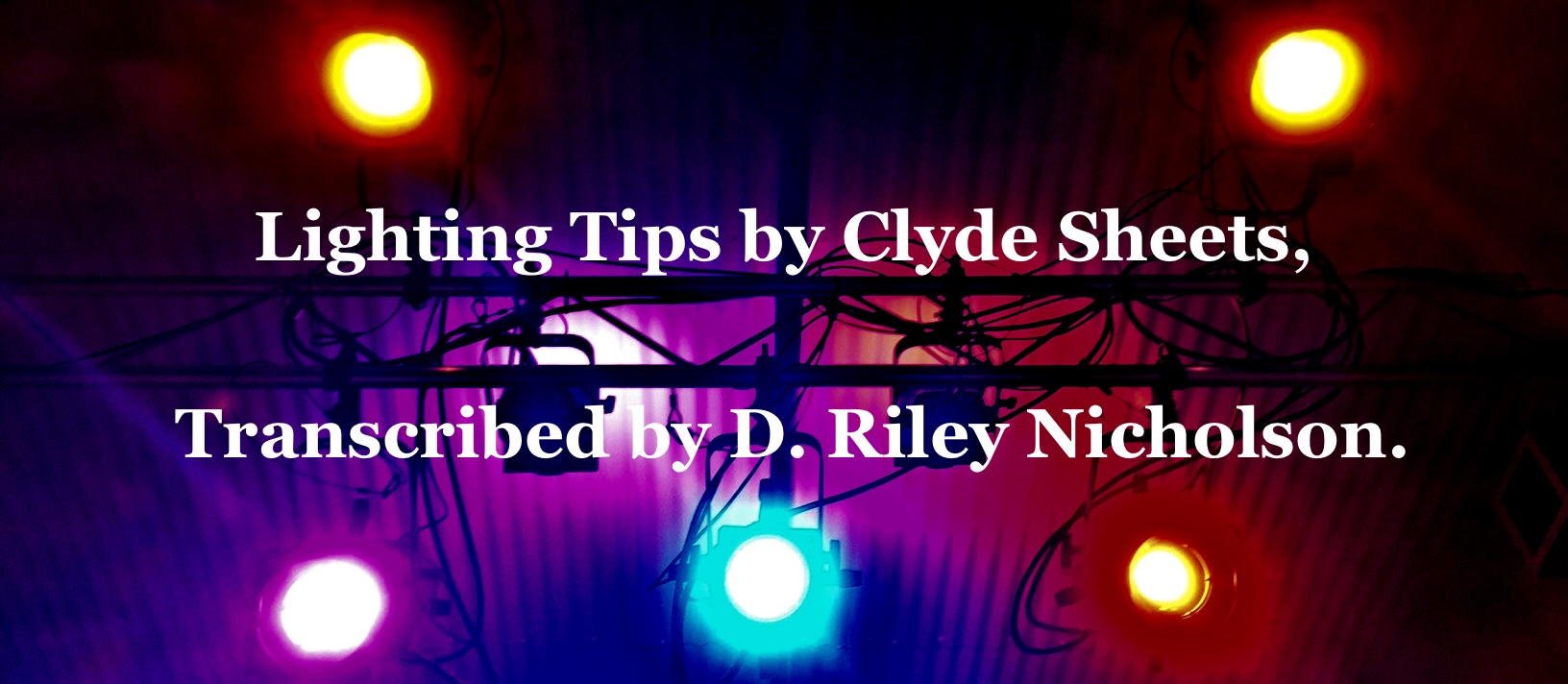Clyde Sheets, a veteran lighting designer who’s worked with ensembles like Eighth Blackbird, So Percussion, and many others, dropped by C4NM to share insights about how to approach lighting live music. As musicians and composers we often obsess about sound while ignoring other key production factors involved with presenting music. A key element of music production is lighting. Without proper lighting, diction might not be heard, audience focus may wander, the mood of the piece might be misinterpreted, or any number of musical elements might not be given the highlight they deserve. Presentation Matters!
The most central concept to lighting design is that idea drives content: any lighting design function must speak to the idea of the musical work; contemplating technical limitations comes later. Everything should relate back to the central idea or narrative of your production. This helps the audience have every chance to zero in on the musical work.
The Four Functions of Successful Lighting
These four functions are the main considerations for successfully representing your musical idea onstage. And of course, each of these four functions should always be speaking to the idea!
- Mood
- What is the mood of work? How do you want people to feel?
- Note, the mood of a work might not be static, it can evolve with the narrative of the work.
- Color is the strongest and most obvious nod to mood. An intense red might evoke anger, a soft red might evoke love.
- Be thoughtful of your color choice because colors are often intimately linked to cultural associations with emotion or ideas. Does the green evoke jealousy, or is it youthful and natural like spring?
- Selective Focus
- Selective focus involves where you want the audience’s focus to be and when you want it there.
- Just as focus on important performers or staging elements is key, focus on non-important or distracting elements of a production can devalue the production experience.
- Selective focus doesn’t just mean that the performers are well lit at all times. For example, shadow may evoke mystery; it’s a valid choice to have a performer in shadow, if it serves the idea of the work.
- Key light is a term often associated with selective focus. Key light describes a primary light source at a given time that’s focusing on a primary object(s) onstage.
- Modeling
- Modeling involves sculpting with light and shadow.
- What are the shapes of instruments, players, and staging elements, and how does the lighting interact with them in 3-D?
- Modeling primarily consists of the angle of light vs. the object that is being lit.
- The angle the light comes from determines its ability to reveal the form of the instrument, object or person being lit. Light from the front fills in shadows and therefore flattens forms, whereas light from the side creates shadow and reveals forms. Light from the top or back helps to define an object in space and separate it from its background. All of these angles and more can help fully define an object in space.
- Visibility
- How well can you see what’s on stage?
- If the lighting is dim or diffuse, does it detract from the visibility of the performers?
- Visibility doesn’t just mean for the audience. Visibility for the performers is key too, as they need to feel comfortable and in control! They may need to see music, ensemble members, equipment, etc.
- Pro-tip: Lighting the music often will light the face through reflection. Eliminate stand lights if possible.
- Note for speaking and singing: It’s often incredibly hard to understand diction if you can’t see someone’s face and lips.
Color Tones: Regardless of race, most everyone’s skin has a pink undertone, which is not something to avoid; lighting that is too cold can make some individuals look grey. However, avoid lighting that’s too warm, as extremely warm lighting can make people look yellow and colorless onstage. Contrary to many performers’ intuition, cooler white light often works well because it makes colors vivid. The warmer you get with a light source, the more it affects the color of what’s on stage. Too much warmth can make everything look yellow and dull.
As Tyra Banks would say: Find your light! Be a moth not a mole. If you can’t feel the light then you can’t be seen. Often lighting is fixed and it will not move with you. It looks very unprofessional for a light to be one place, when you’re in another.
Concert Black Under Stage Lighting: Under stage lighting, black is not always black, and each ensemble member can look like they’re wearing different colors, as different fabrics reflect light differently. So make sure your ensemble doesn’t start looking like shades of black and grey, rather than uniform concert black.
How do I talk to my lighting designer or production manager? Avoid jargon. It’s better for them (and for you) if you speak directly about the ideas in your work. Speak in terms of metaphor and mood, e.g. “I need this to feel like downtown at 6pm on a foggy day, and then 30 minutes in, the sun comes out.” We can tell stories, light from behind vs. front, etc. Again, idea drives content!
